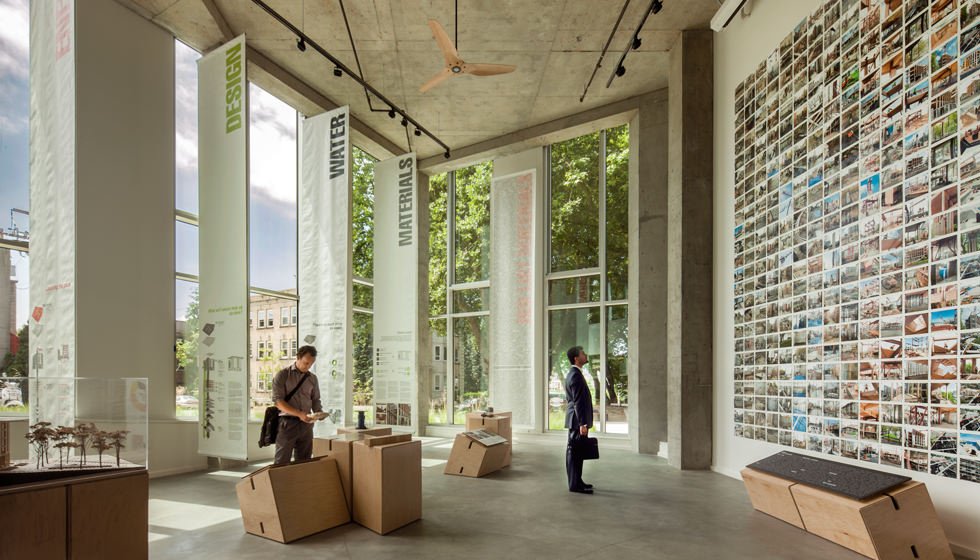The Transformative Power of Biophilia in the Built Environment - My Favorite Case Studies.
Biophilia, the innate human connection with nature, is increasingly recognized as a vital aspect of the built environment. In this post, we will delve into five data-driven case studies that showcase the tangible and quantifiable benefits of incorporating biophilia into architectural and urban design. These studies reveal the positive impact on well-being, productivity, sustainability, and even economic outcomes through hard numbers and empirical evidence.
Disc Architects
Amazon's "The Spheres" - Boosting Employee Productivity
Amazon's "The Spheres" in Seattle serves as an exemplary case study. A research study conducted within the workspace revealed that employees who spent time in this biophilic environment exhibited a 15% increase in productivity compared to those in a traditional office setting. Moreover, absenteeism dropped by 30%, translating to significant cost savings for the company.
This biophilic oasis, filled with over 40,000 plants, provided a direct link between a green workspace and enhanced job performance. The study data highlighted the importance of incorporating nature into office design for tangible productivity gains.
2. One Central Park - Enhancing Air Quality
The One Central Park residential complex in Sydney, Australia, features striking vertical gardens. A comprehensive air quality study found that the introduction of green walls reduced air pollution by 28% within the building's vicinity. The quantifiable reduction in harmful pollutants underscored the potential of biophilic design to improve urban air quality and contribute to a healthier living environment.
3. The Bullitt Center - Sustainable Building Performance
The Bullitt Center in Seattle, often lauded as one of the greenest commercial buildings globally, boasts impressive sustainability metrics. A five-year performance evaluation demonstrated that the building achieved net-zero energy and water consumption. Additionally, it reduced carbon emissions by 80% compared to conventional structures of similar size.
This biophilic and sustainable marvel not only set a precedent but also provided concrete data on the feasibility and advantages of such designs, reinforcing their environmental benefits.
4. Singapore's Supertree Grove - Economic Impact
Singapore's Supertree Grove has not only transformed the city's skyline but also become a major tourist attraction. An economic analysis revealed that the Supertree Grove generated an annual revenue boost of $100 million, primarily through increased tourism and associated spending.
This case study highlighted the economic advantages of biophilic urban design, as green spaces can contribute significantly to local economies. The data emphasized the financial benefits of integrating nature into urban landscapes.
5. The WELL Building Standard - Health and Well-being
The WELL Building Standard is a comprehensive framework emphasizing biophilic principles. Numerous studies have demonstrated its impact on occupant well-being. Employees in WELL-certified buildings report a 26% reduction in symptoms related to poor indoor air quality, a 36% decrease in stress levels, and a 40% increase in overall job satisfaction.
These data-driven results reinforced the value of incorporating biophilia for enhanced health and productivity. The WELL Building Standard's focus on empirical evidence has highlighted the profound impact of biophilic design on occupant well-being.
From productivity gains in biophilic workplaces to air quality improvements in green buildings, and from economic contributions of urban green spaces to enhanced well-being in WELL-certified environments, the numbers speak for themselves.
As we move forward in the pursuit of sustainable and health-focused architecture and urban planning, these quantifiable benefits serve as a beacon for architects, designers, and policymakers. They emphasize that biophilic design not only enriches our connection to nature but also yields tangible advantages for individuals, communities, and the environment. It is clear that prioritizing biophilia in the built environment is not only a matter of well-being but also a smart, data-driven choice for a brighter and more sustainable future.





